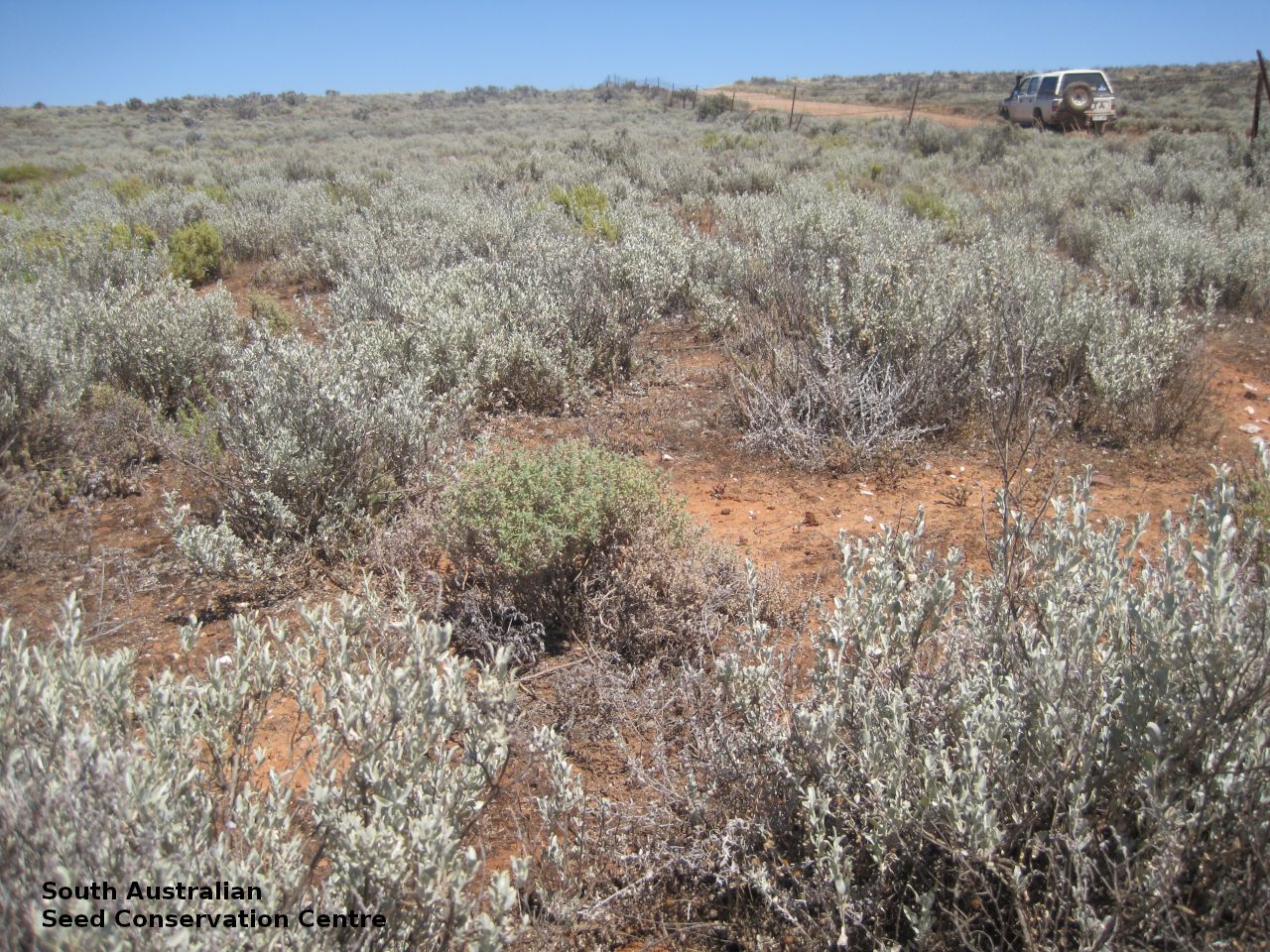
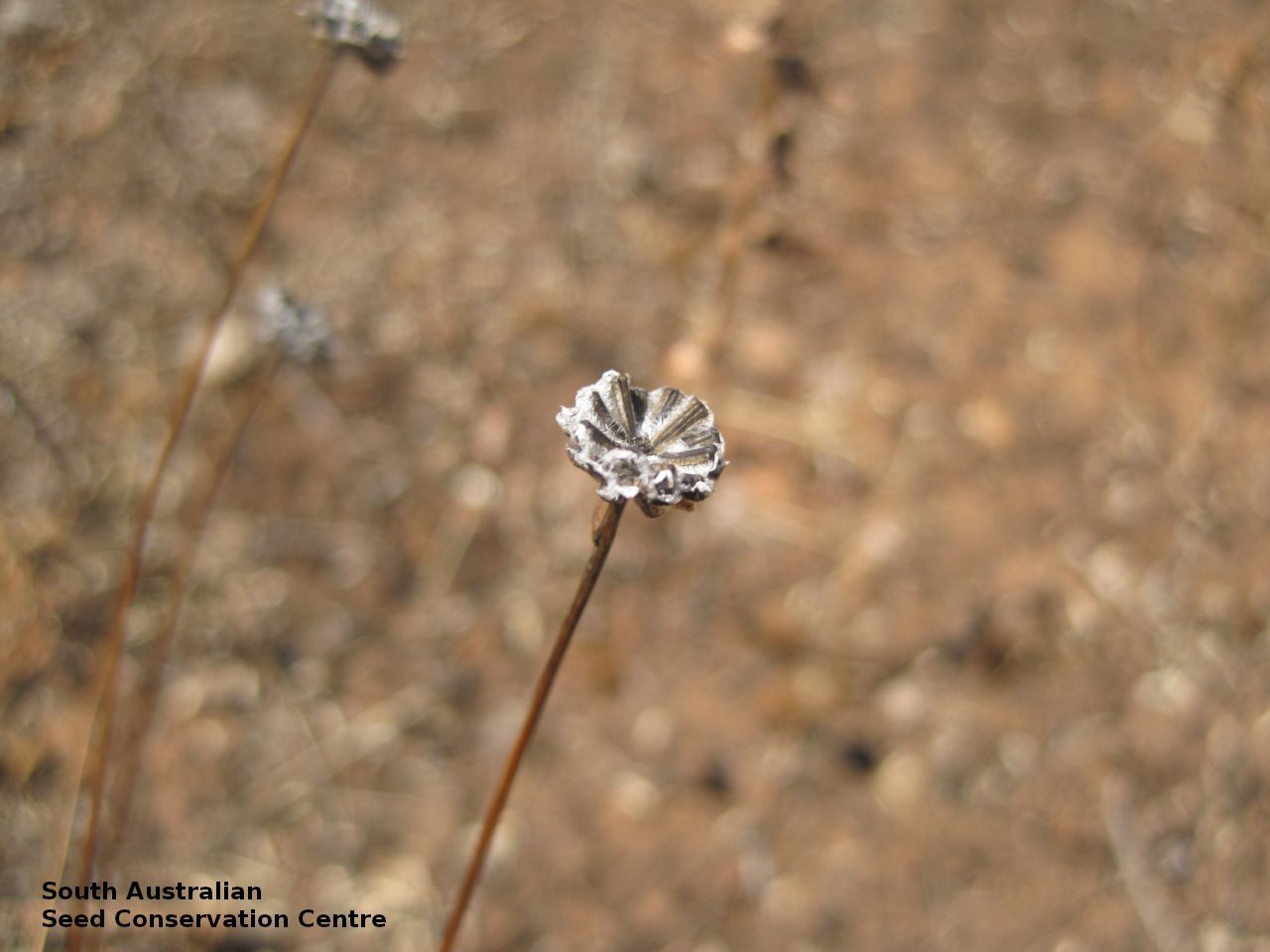
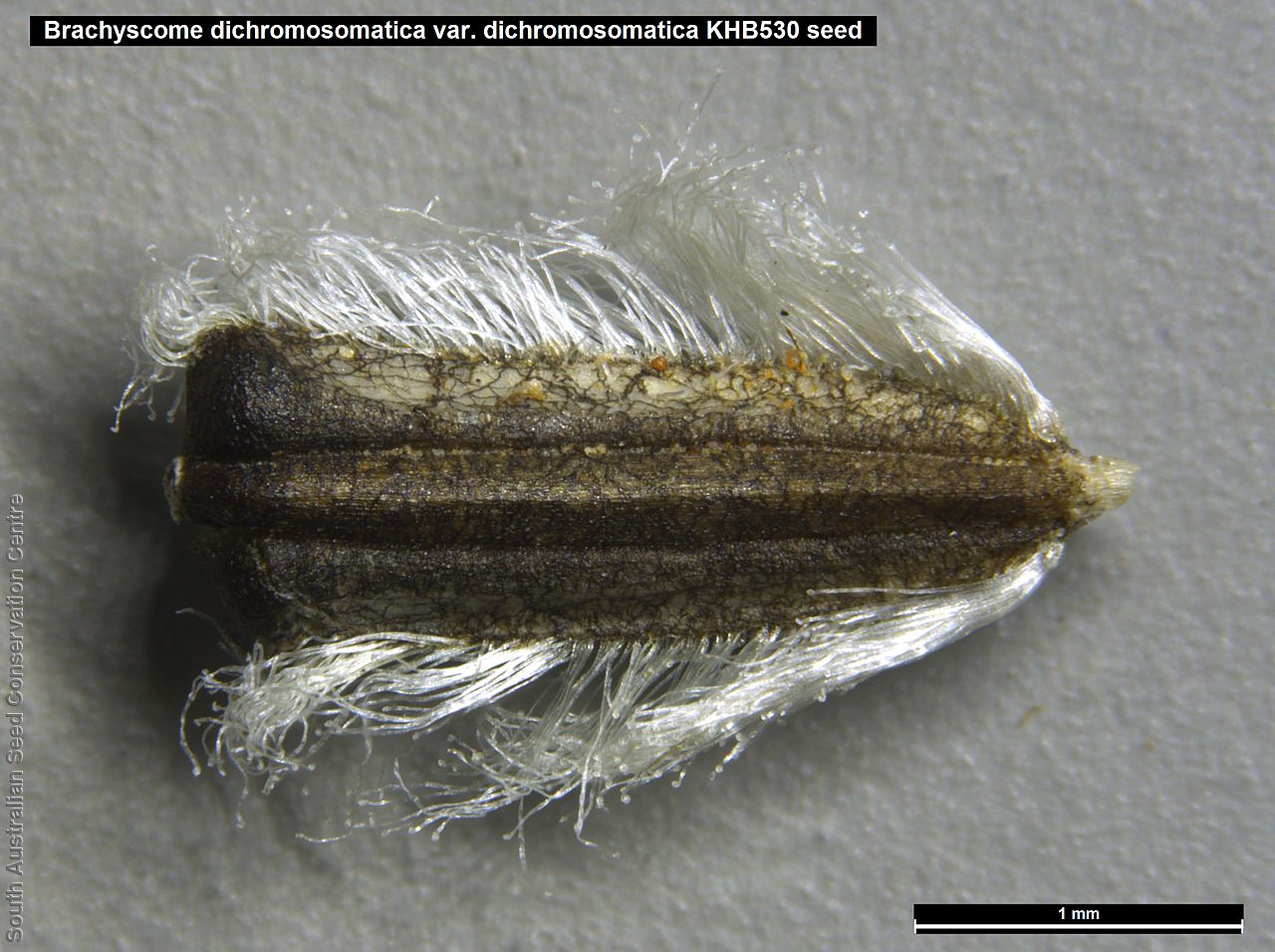
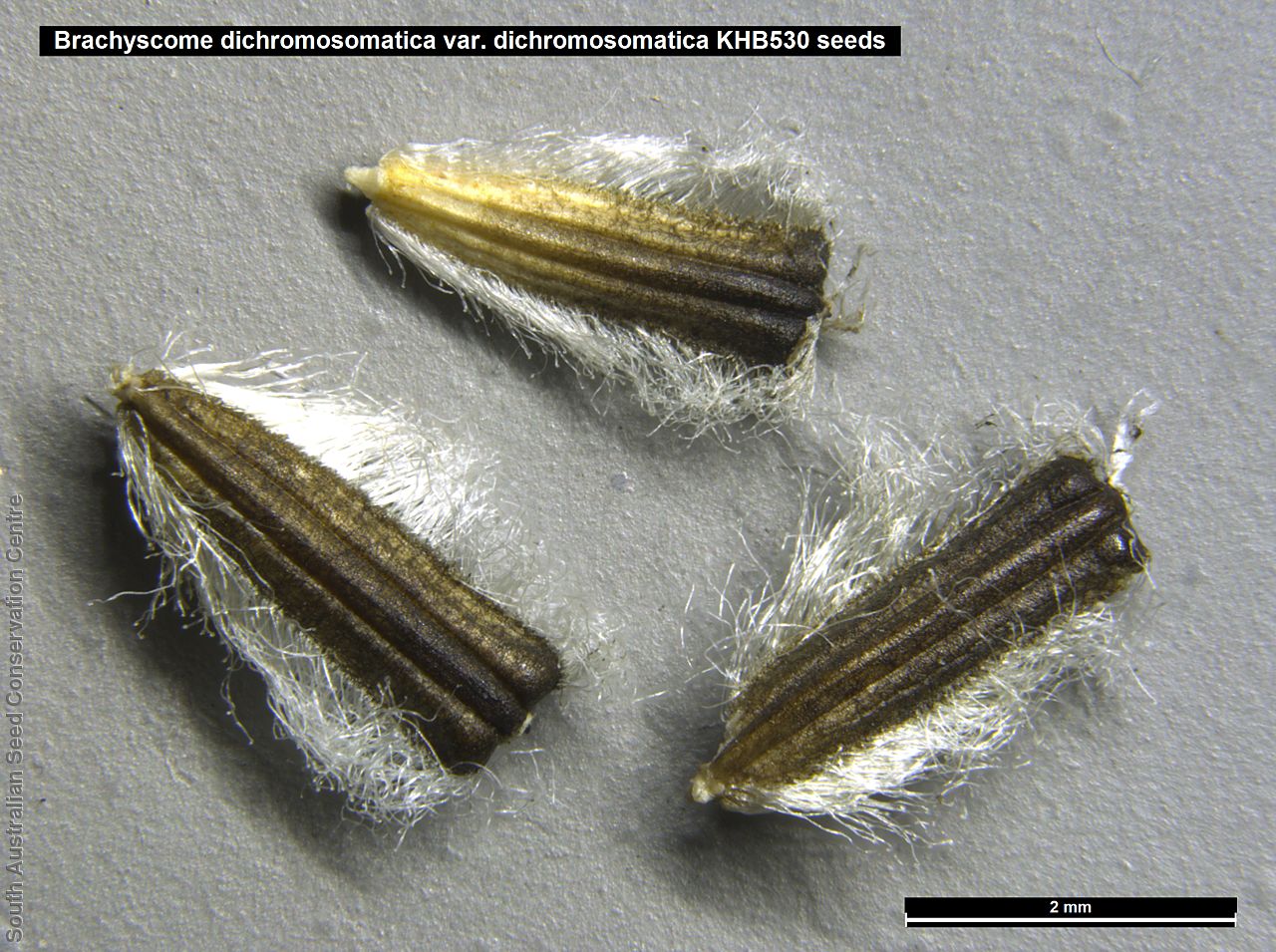

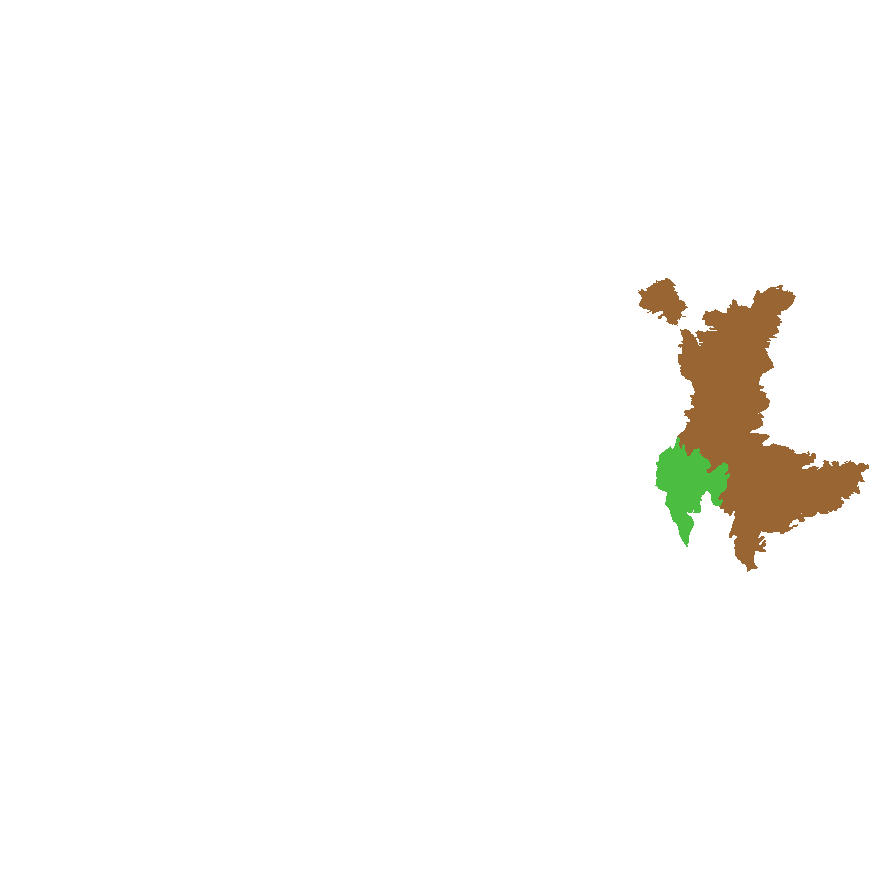
Prior names
Brachycome lineariloba
Brachycome dichromosomatica var. dichromosomatica
Common names
Purple Hard-head Daisy
Large Hard-head Daisy
Etymology
Brachyscome from the Greek 'brachys' meaning short and 'kome' meaning hair; referring to tuft of short bristles or hairs of the pappus. Dichromosomatic meaning having two chromosomes.
Distribution and status
Endemic to South Australia and found in the Flinders Ranges and Lake Torrens region, growing saltbush, arid low shrubland and on rocky outcrops. Native. Common in South Australia.
Herbarium regions: Lake Eyre, Gairdner-Torrens, Flinders Ranges, Eyre Peninsula
NRM regions: Eyre Peninsula, Northern and Yorke, South Australian Arid Lands
AVH map: SA distribution map (external link)
Plant description
Annual herb to 25 cm high. Leaves basal and near-basal, not forming a rosette, pinnatisect with 5-9 linear obtuse segments, 3-8 cm long, glabrous. Yellow daisy flower appearing in June to September. Brachyscome dichromosomatica var. dichromosomatica differ from B. dichromosomatica var. alba by having pale blue or mauve ray corolla, at least on the under surface (white ray corolla in B. dichromosomatica var. alba). Fruits are dense brown daisy-heads. Seeds are brown-black wedge-shaped seed 3 mm long and 1 mm wide, with dense long white hairs along the margin. Seed embryo type is spatulate fully developed.
Seed collection and propagation
Collect seeds between August and December. Pick heads that are maturing, drying off, with brown seeds. Place the seed-heads in a tray and leave to dry for a week. Then gently rub the heads with a rubber bung to dislodge the seeds. Use a sieve to separate the unwanted material. Store the seeds with a desiccant such as dried silica beads or dry rice, in an air tight container in a cool and dry place. From one collection, the seed viability was high, at 100%. This species has physiological dormancy that need to be overcome for the seed to germinate.
| Location | No. of seeds (weight grams) | Number of plants | Date collected | Collection number Collection location | Date stored | % Viability | Storage temperature |
|---|---|---|---|---|---|---|---|
| BGA | 18,000 (12.58 g) | 100+ | 23-Nov-2010 | KHB530 Flinders Ranges | 1-Jan-2012 | 100% | -18°C |
Number of plants: This is the number of plants from which the seeds were collected.
Collection location: The Herbarium of South Australia's region name.
% Viability: Percentage of filled healthy seeds determined by a cut test or x-ray.